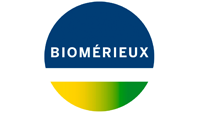bioMérieux announces CE-marking of VIDAS® TBI (GFAP, UCH-L1), a test for improved assessment of patients with mild traumatic brain injury
23 Oktober, 2023Marcy-l’Étoile, France – October 13th, 2023 – bioMérieux, a world leader in the field of in vitro diagnostics, announces the CE-marking of VIDAS® TBI (GFAP, UCH-L1), a blood test to support assessment of patients with mild traumatic brain injury (mTBI), based on a unique combination of brain biomarkers: GFAP and UCH-L1*. This accurate and objective tool can help reduce the number of unnecessary head Computed Tomography (CT) scans performed for mTBI patients and to decrease Emergency Department (ED) overcrowding by predicting the absence of acute intracranial lesions (ICL) following a head trauma.
Defined as an alteration of brain function caused by an external force, TBI is a major public health burden. 69 million people suffer from it worldwide every year1. Based on clinical presentation and assessment of severity using the Glasgow Coma Scale (GCS), TBI is classified as mild, moderate or severe2. 70 to 90% of TBIs are considered mild3 yet they constitute one of the most frequent reasons for ED visits4.
While head CT-scans are mandatory in all moderate and severe TBI cases, ED physicians often use scans in initial evaluation of mTBI cases to detect potential post-traumatic intracranial lesions. However, ICLs are typically present in less than 10% of mTBI patients, so a significant number of these scans could be avoided. These unnecessary scans increase patient workup time, expose patients to CT-scan radiation and take up resources of burdened ED departments5.
VIDAS® TBI (GFAP, UCH-L1) fills a gap in patient screening methods by safely ruling out ICLs and offering objective information to help determine if a CT-scan is necessary in adults, together with clinical information. VIDAS® TBI (GFAP, UCH-L1) measures the concentration of GFAP and UCH-L1*, two brain biomarkers that are released into the bloodstream starting from the first hour following a brain injury. This easy-to-interpret test, with a large testing window of up to 12 hours after injury, covers a wide adult mTBI patient population and can shorten total ED workup time.
“ED doctors must make decisions fast for the benefit of patients, and for efficient patient management in EDs. A significant number of CT-scans could be avoided in the case of mTBI because 90% show no abnormalities,” says Mark Miller, Executive Vice President, Chief Medical Officer. “VIDAS® TBI (GFAP, UCH-L1), in combination with a clinical evaluation, provides an objective and accurate blood test result for optimal mTBI management to help clinicians perform fast and efficient ED patient screening with confidence, optimizing CT-scan usage and improving the standard of patient care.”
“At bioMérieux, we have demonstrated for over 20 years our ability to leverage innovative biomarkers to impact patient management and outcomes in EDs,” declares Jennifer Zinn, Executive Vice President, Clinical Operations. “We believe that VIDAS® TBI (GFAP, UCH-L1) could be a real game changer for ED physicians assessing mTBI cases daily. It’s an important innovation that further strengthens the VIDAS® test range for emergency and critical care.”
VIDAS® TBI (GFAP, UCH-L1) is available on VIDAS® 3 and VIDAS® KUBE™ immunoanalyzers, offering on-demand automated testing 24/7. The commercial launch of this test is planned in selected European, North African and South American markets in the last quarter of 2023, extending to the rest of the world throughout 2024 and 2025.
*GFAP: Glial Fibrillary Acidic Protein ; UCH-L1: ubiquitin C-terminal hydrolase-L1
2) https://www.glasgowcomascale.org/
3) Peterson B, Zhou H, Thomas KE, Daugherty J. CDC Surveillance Report 2017: Traumatic Brain Injuryrelated Hospitalizations and Deaths by Age Group, Sex, and Mechanism of Injury. https://www.cdc.gov/traumaticbraininjury/pdf/TBI-surveillance-report-2016-2017-508.pdf Accessed on March 15, 2023.
4) https://www.center-tbi.eu/patients/facts
5) Easter JS, Haukoos JS, Meehan WP, Novack V, Edlow JA. Will neuroimaging reveal a severe intracranial injury in this adult with minor head trauma? the rational clinical examination systematic review. JAMA 2015;314:2672–81.

